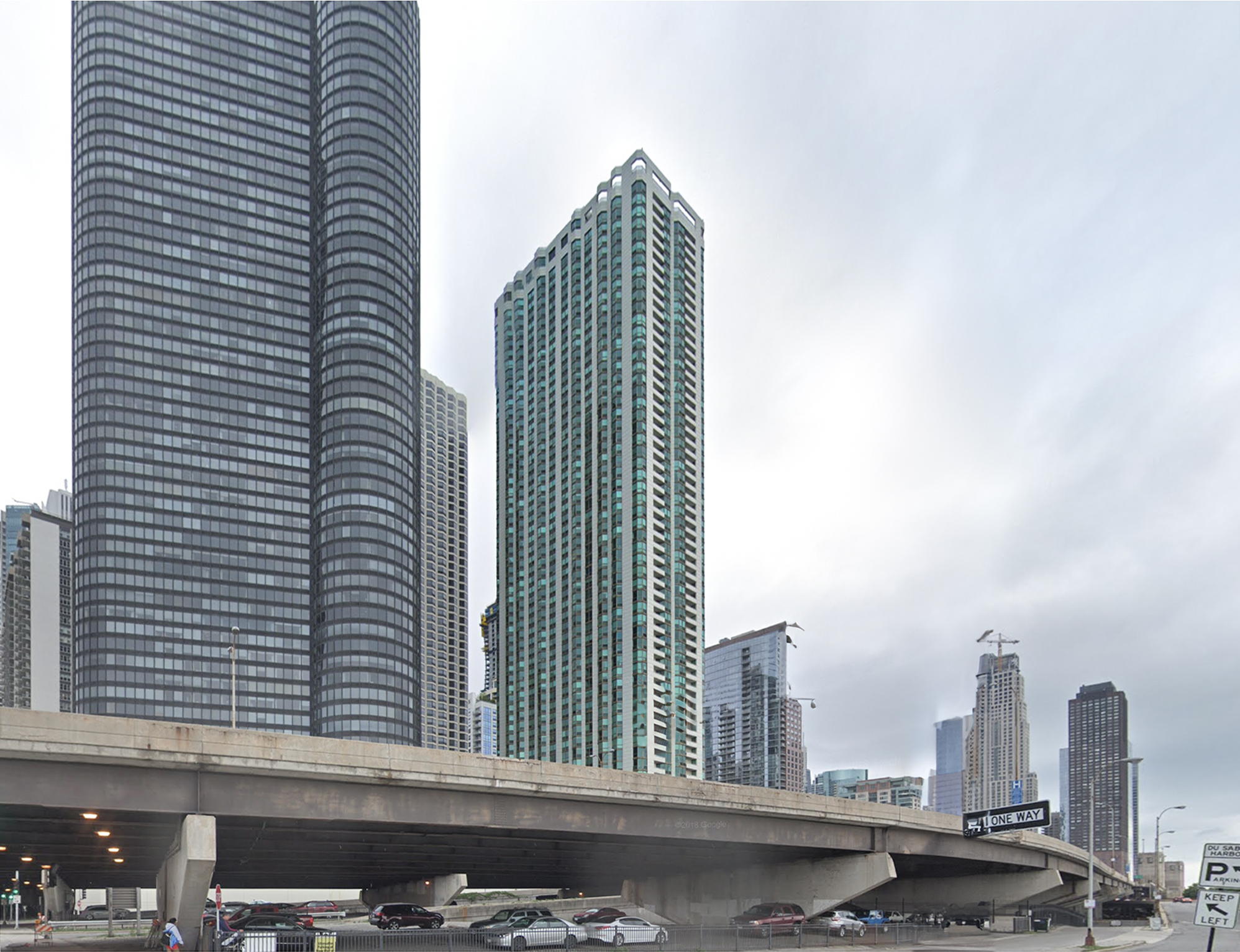The The Parkshore is a Modern Style skyscraper designed by Barancik Conte, and built in 1991 in Chicago, IL.
Its precise street address is 195 North Harbor Drive, Chicago, IL. You can also find it on the map here.

The The Parkshore is a Modern Style skyscraper designed by Barancik Conte, and built in 1991 in Chicago, IL.
Its precise street address is 195 North Harbor Drive, Chicago, IL. You can also find it on the map here.
Barancik Conte was the architecture firm in charge of the architectural design.
That being said, architecture is a complex discipline involving many professionals from different fields, without whom this building would have not been possible. We will surely be leaving out a lot of names here, but here is a list of the people we do know also played their part in making the The Parkshore a reality:
The The Parkshore can be categorized as a Modern Style building.
The modern style, also referred to as Modernism in the U.S. (distinct from the European Modernist movement), is characterized by minimal ornamentation, clean lines, and the use of materials such as glass, steel, and concrete. This style prioritizes functionality and the honest expression of materials and structure.
Modern architecture in the U.S. follows many principles of the International Style but with slightly less rigid rules than those of the purist European International Stylists like Le Corbusier, or even those who imported the style to the U.S. like Mies van der Rohe and Walter Gropius.
Modern skyscrapers often feature expansive glass curtain walls, open floor plans, and focus on volume over mass. This blend of innovation and simplicity defined the modern skyscraper, creating the sleek, functional urban landscapes prominent in mid-20th-century U.S. architecture.
The The Parkshore reaches an architectural height of 554ft (169m). It has a total of 56 floors, served by 6 elevators, which combined offer a total of 945,996 sqf (87,886m2) of usable space.
In regards to parking space, the building has a total of 371 spots available, which roughly equals 7 spots per floor (above ground), or one parking spot per every 2,551 sqf (237m2) of usable space.
Ever since opening its doors to the public in 1991, the The Parkshore has mainly been used as Residential space.
The The Parkshore has a total of 483 residential units throughout its 56 floors. If you are interested in learning more about the residences and their availability, you can check the The Parkshore's website.
The The Parkshore uses a frame structure made of reinforced concrete columns and beams.
A frame structure uses a combination of beams and columns to sustain the building's weight. The walls in this case are non-load bearing, which allows for more flexibility when distributing the interior spaces.
The facade uses a non-load bearing curtain wall system. This means the curtain wall modules are anchored to the building's structural frame, typically by being attached to the edge of the floor slabs. The curtain wall system connects to the slabs using brackets, anchors, and mullions, which transfer the loads imposed by wind and temperature changes, to the building's primary structural elements.
This setup allows the curtain wall to accommodate differential movement between the facade and the structural frame, such as thermal expansion, floor deflection, or sway from wind forces. This system's integration with the slab edges also allows for continuous insulation and weatherproofing layers.

From an aesthetic point of view, the facade features a combination of reflective blue-green glass and precast concrete panels, which organize the facade into vertical stripes that emphasize the building's verticality.
The irregular silhouette of the floor plan, with its strategic setbacks and projections, shapes the windows into varied angles that maximize panoramic views of Lake Michigan and the city. The staggered balconies further animate the facade, adding a human scale and a distinct architectural rhythm.